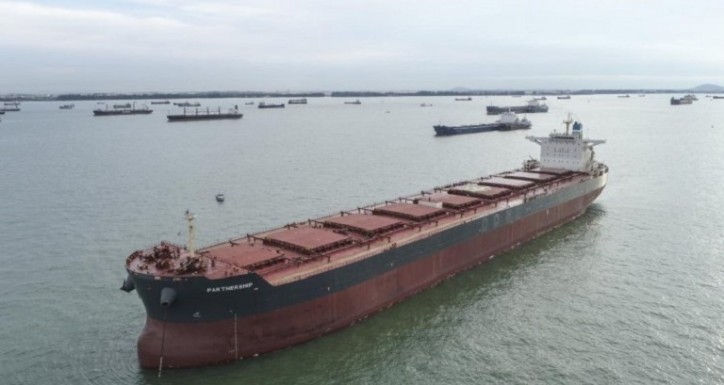Seanergy Maritime Holdings Corp. (NASDAQ: SHIP) announced yesterday that it has entered into commercial agreements for the installation of exhaust gas cleaning systems (scrubbers) on five of its Capesize bulk carriers before the January 1, 2020 implementation date of the IMO sulfur emission cap regulations. Upon completion of the installations scheduled for Q2 and Q3 2019, the vessels will commence index-linked period employment with three leading dry-bulk charterers ranging in durations between three and five years.

The Company has secured the scrubber equipment from Hyundai Materials, a well-known Korean manufacturer and has reserved retrofitting slots at an experienced dry-dock facility in China. The total investment, to be covered by the charterers, is expected to exceed $12.5 million, including equipment and installation costs.
Stamatis Tsantanis, the Company’s Chairman & Chief Executive Officer, stated: “We are very excited to announce these commercial agreements which should result in approximately $12.5 million accretion in our NAV. We believe that the significant investment that will be implemented in full cooperation with our charterers represents a balanced and comprehensive approach towards the new environmental regulations scheduled to become effective as of January 1, 2020.
“Such strategic direction comes after careful consideration of the various aspects of the new regulations and their implications in our sector, given that Seanergy was one of the first Greek dry-bulk companies to conclude a feasibility study on scrubbers, in cooperation with the American Bureau of Shipping (ABS).
“This significant investment by our charterers, in combination with innovative charter agreements, is expected to increase the market value of the subject vessels without our Company incurring additional debt or diluting our shareholders.
“It is important to further note that the underlying time-charters are index linked, maximizing Seanergy’s exposure to the positive fundamentals and outlook of the Capesize market. Moreover, through profit sharing agreements calculated on the spread between high and low sulfur fuel, we believe we will be able to capitalize on short-term distortions in the bunker market.
“We aim to complete the installations of the scrubbers during 2019 before the IMO 2020 regulations come into force. Finally, upon implementation of the new IMO regulations, all of Seanergy’s fleet will be fully compliant with the new rules.”
Details of the Agreements:
A. M/V Partnership and M/V Lordship
The Company has entered into two time charter agreements with a major European utility company, for M/Vs Partnership and Lordship, for a firm period of 33 to 37 months plus one additional period of 11 to 13 months at charterer’s option.
B. M/V Premiership and M/V Squireship
The Company has entered into two time charter agreements with a leading multinational commodity trading and mining company, for the M/Vs Premiership and Squireship, for a firm period of 36 to 42 months plus two additional periods of 11 to 13 months at charterer’s option.
C. M/V Championship
The Company has entered into an agreement for the sale and leaseback and a five year time charter with a large international commodity trading company for the M/V Championship, for a firm time-charter period of 60 months plus an additional 18 month period at charterer’s option.
The latter two agreements are subject to the conclusion of definitive documentation.
The daily hire on all three agreements is index-linked rate based on the 5-routes T/C average of the Baltic Exchange Capesize Index (BCI).
As part of the time charter agreements, the charterers will cover 100% of the equipment and installation cost for retrofitting the vessels with exhaust gas cleaning systems (scrubbers). On top of the daily hire, the Company will receive an additional compensation based on the spread between the price of High Sulphur Fuel Oil and the price of Marine Gas Oil or other IMO-compliant and ISO certified Low Sulphur Fuel Oil throughout the term of the time charters.
Source: Seanergy Maritime